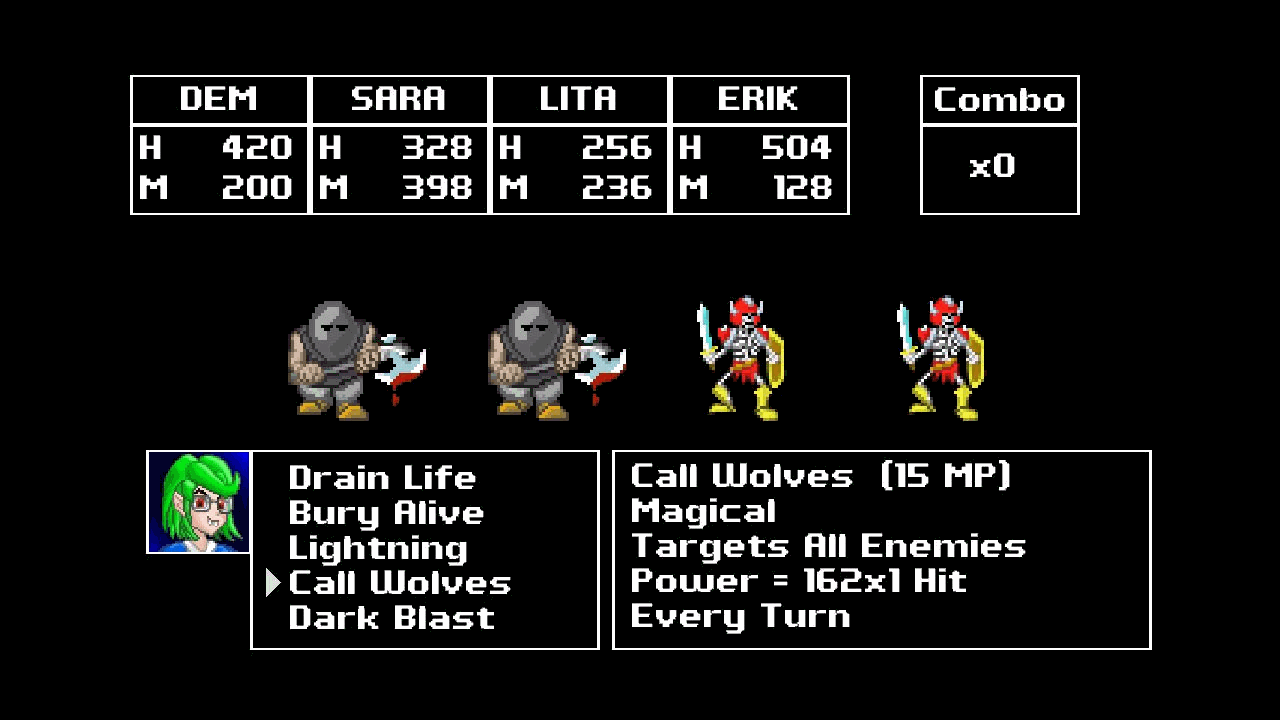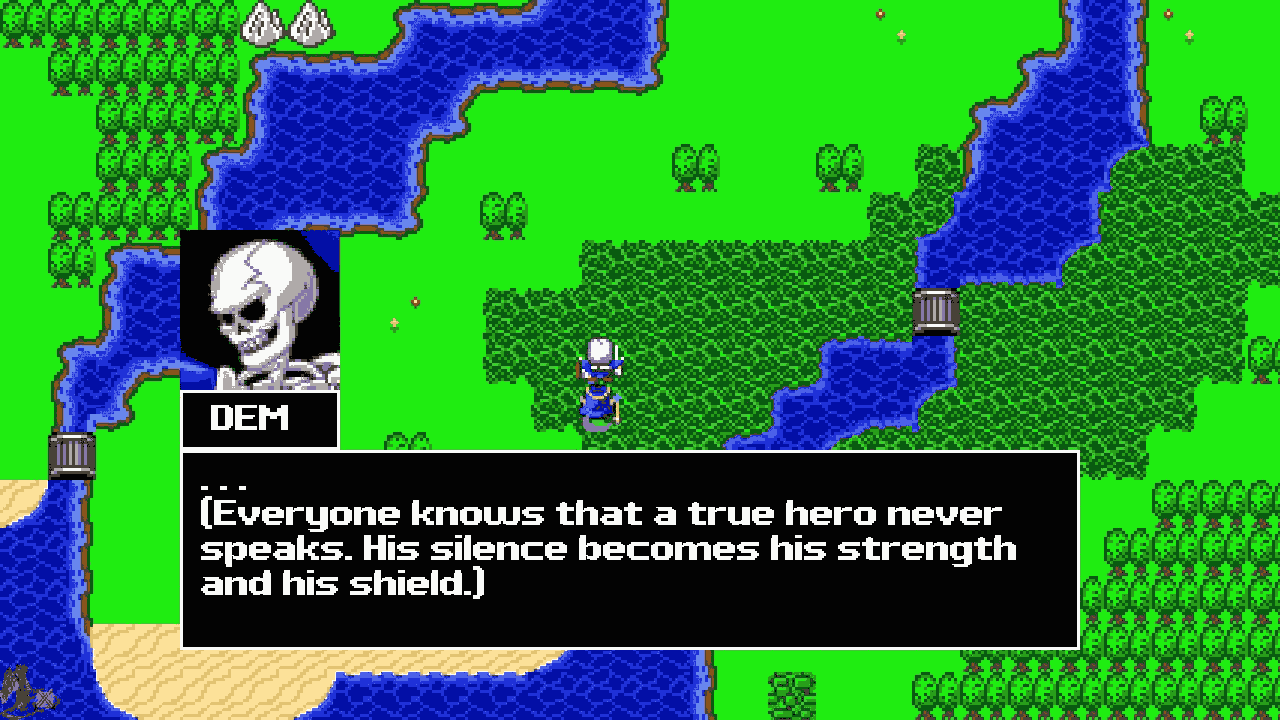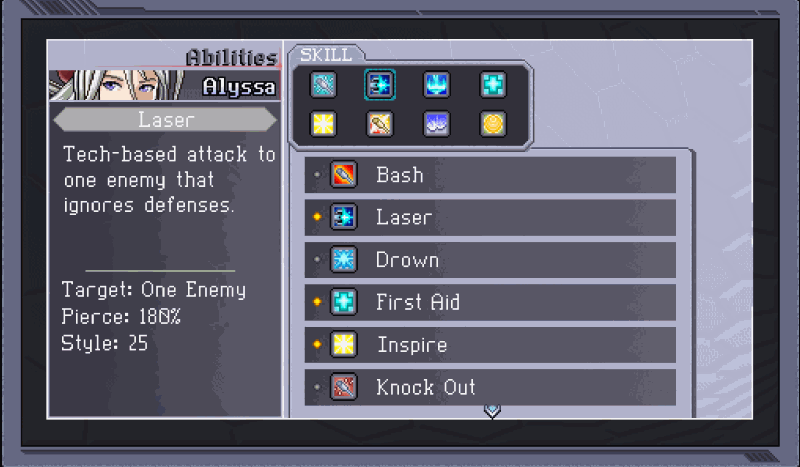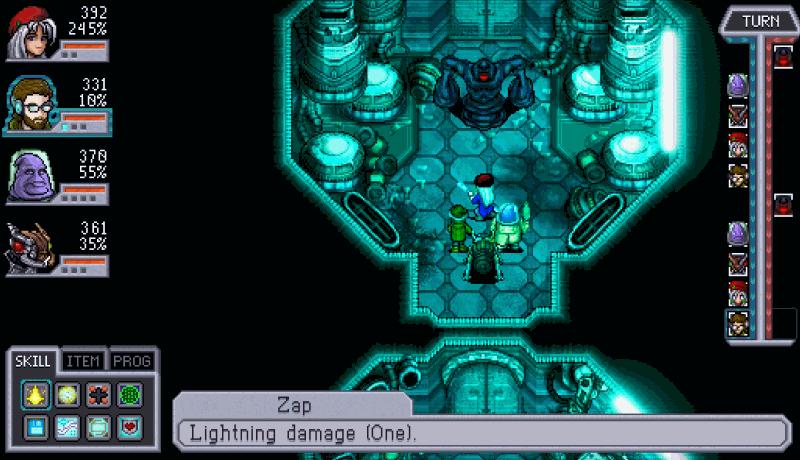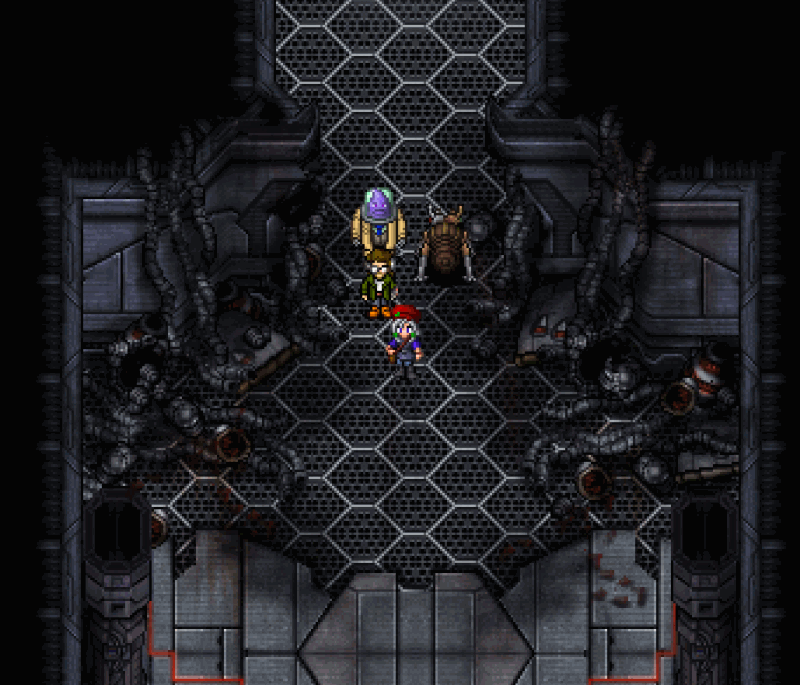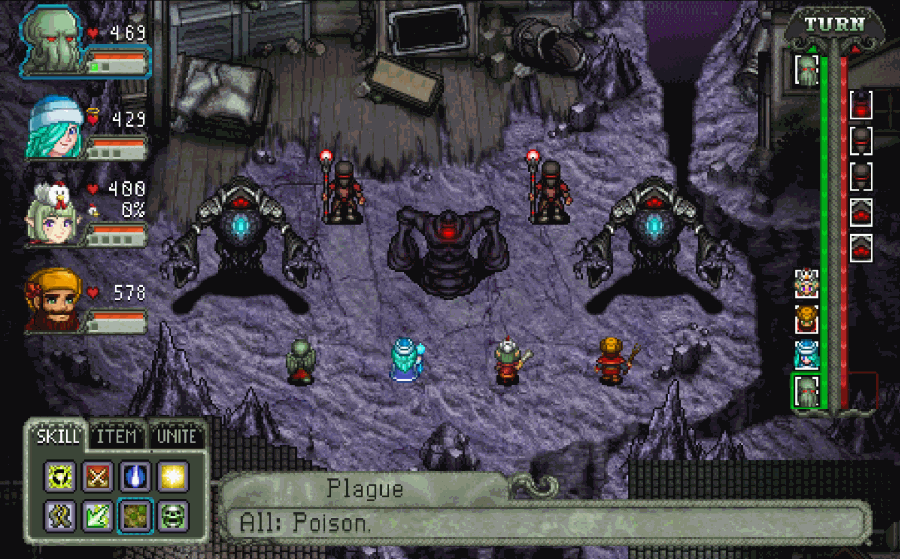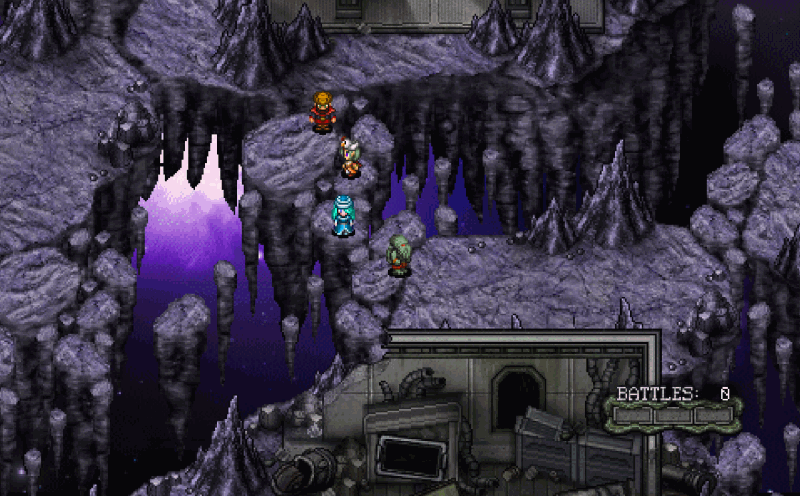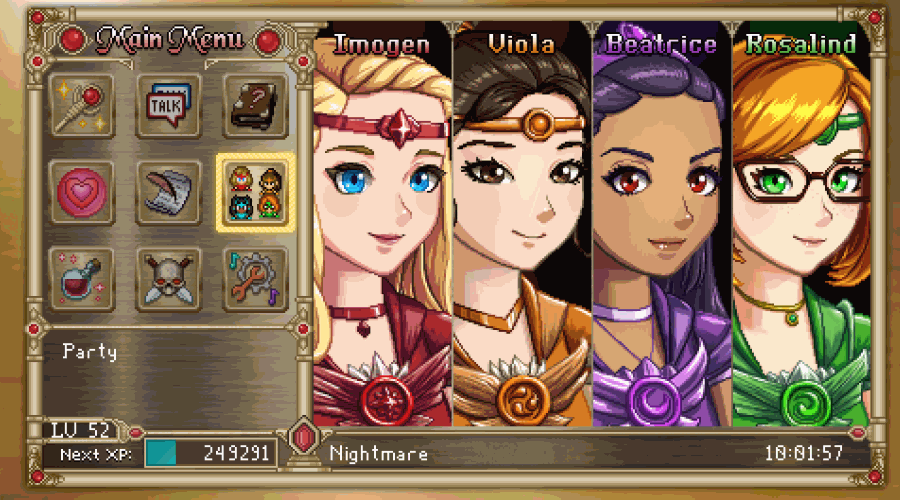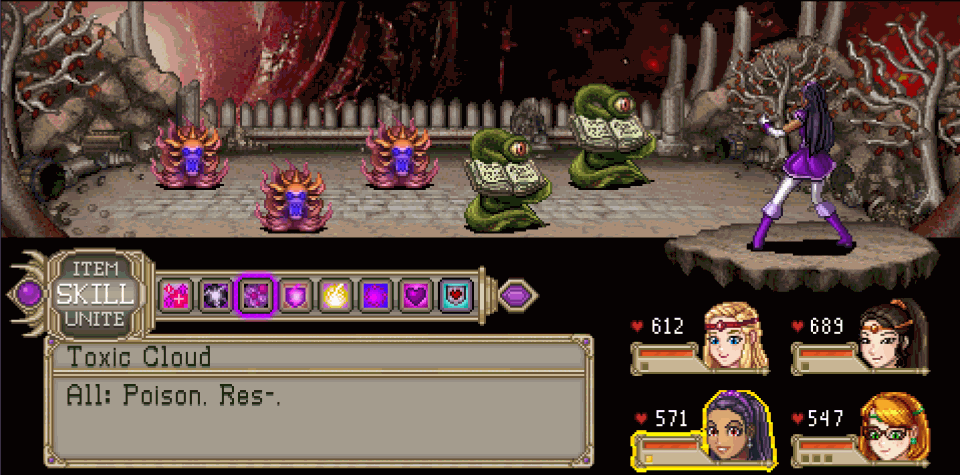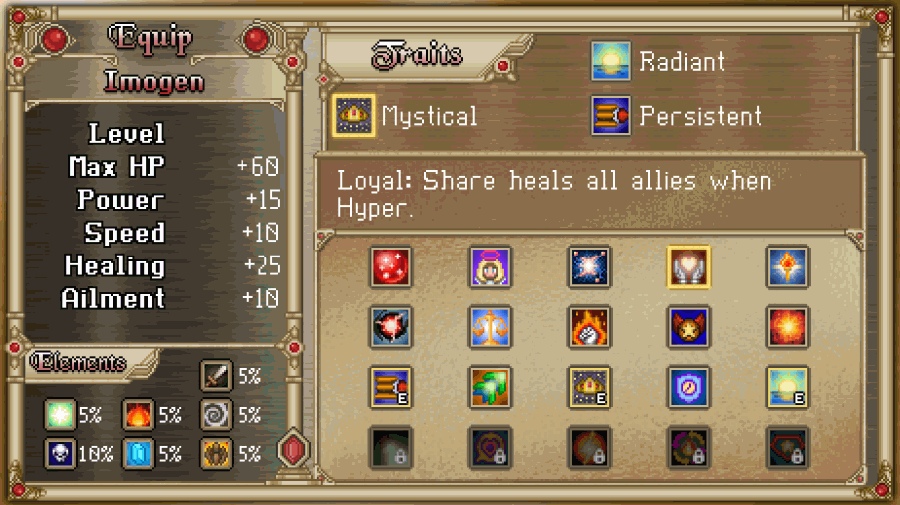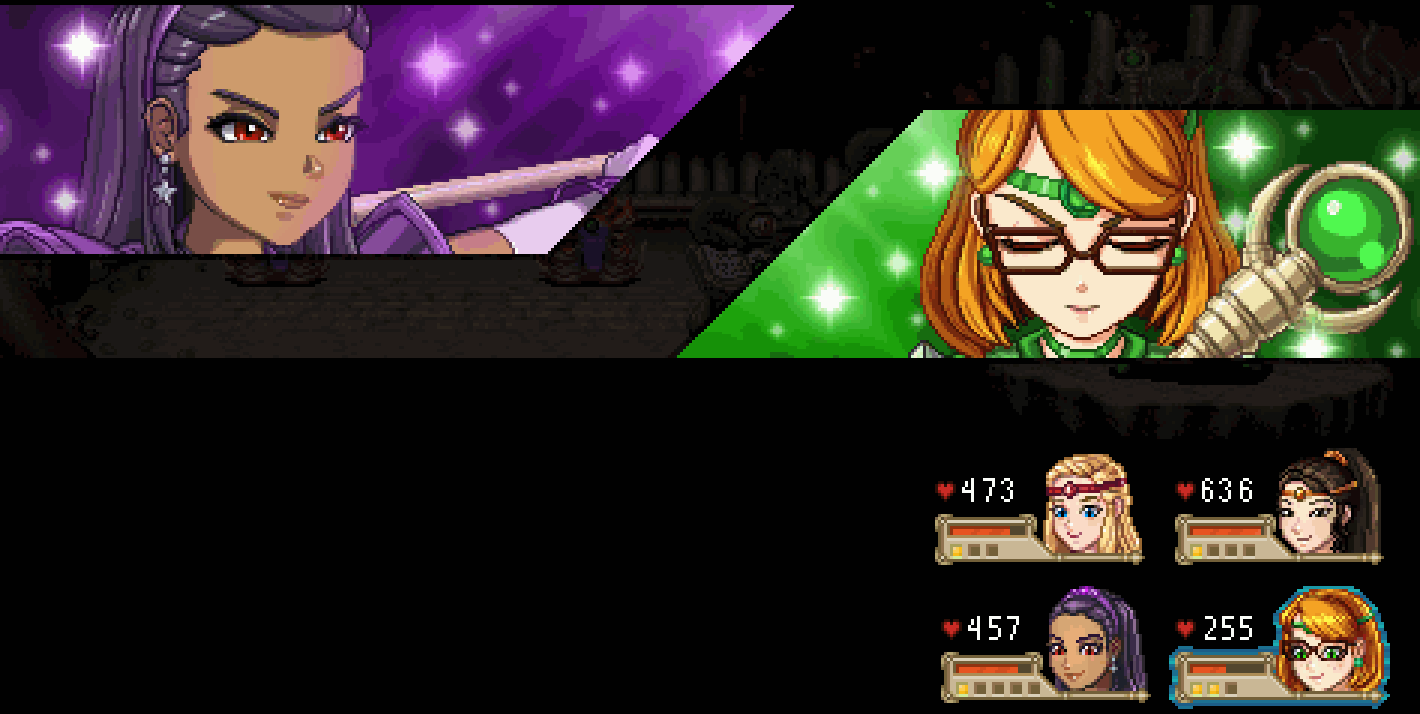2022-12-27: Zeboyd and A Reinvention of the "Light RPG"
Zeboyd may be my favorite indie game dev. They're certainly in the top three from whom I buy every first-party game I can because I'm sure it'll be a good time (for curiosity sake: the other two are Arcen and Spiderweb). They're mainly known for their magnum opus Cosmic Star Heroine, but their other offerings all experiment and reinvent the concept of a "Light RPG". Light in story, light in humor, light in mechanics, and light in playtime. Zeboyd's history is mainly five dollar RPGs that clock in around ten hours of playtime, and I think that's neat and something we don't see all too often.
I've finished every game Zeboyd's published except for a jaunt they had with being licensed by Penny Arcade to make a couple of games about their comics. I'm not a webcomic person so I skipped those. The rest though I can go on about at length!
Breath of Death VII and Cthulhu Saves the World
Zeboyd's first major releases were a pair of similar games that had an extremely RPG Maker aesthetic without being made in RPG Maker. This isn't the insult it seems to be at the surface; when I say "RPG Maker aesthetic" I mean mostly short, direct, simple, and doesn't expect a lot of the player. Even so, both titles enshrined some important design outlooks that remain strong through their future releases.
Both games have plots I'd describe a "Light-hearted dark comedy". The former stars a skeleton trying to figure out why he's not, you know, dead and ends up in a gambit to save the world. The latter sees Cthulhu of Lovecraft infamy lose his powers and go on an extremely comically generic JRPG quest to get them back. Both games showcase self-aware fourth wall breaking humor presented as "just accept it" dry wit within the game, arguments with the player or a narrator, and a heavy dose of comedic critique of RPGs and video games in general. These are not games you play for a serious, deep plot; and that's great!
If I had to describe general combat, gameplay, and system design in these titles it'd be "Generic JRPG with a few laser targeted experimental redesigns that alter the very core of the play experience". Zeboyd clearly had some idea on how to make the genre as a whole better, and having played BoD7 and CSTW, I came away wishing every RPG had the improvements they offered. We're hovering roughly around the Dragon Quest 3 or 4 era of battle interfacing and options, with a facelift.
There's three major improvements that completely change the game and all three are focused on keeping the player moving. The first is while both games have random step-count combat, each map of the game has a limit to how many of these encounters will show up. Once you exhaust the limit, they stop. You can now traverse that area without interruption. Most maps have an encounter count of 20-50 depending on size, complexity, and location in the storyline; the world map has 999 but you can exhaust that if you're extremely patient (though there's no reason to).
Improvement number two is a "Force combat" button in the menu. If you select it, a fight starts, even if you exhausted the battle count in an area. That's it. That's the entire thing. No walking in circles to force random encounters, no wandering around looking for encounter tokens on the map. If you need to grind (and you probably won't in a Zeboyd RPG), you hit a button and fight as many times as you want. Since experiencing this I've longed for it to be a mainstay in every RPG. 7th Dragon had it and it's a good thing it did too because 7th Dragon required forcing encounters at specific locations sometimes; but that's it. I've not seen it in much else.
Improvement, or perhaps alteration, the third is a focus on snappy combat. Both games try to prevent turtling and sandbag encounters by having combat get more explosive the longer it goes. Every time a turn a concludes, both sides of the fight gain 10% to their outgoing damage. There is no limit to this escalation so eventually one side or the other will just one-shot the opponent. Typically since enemies can have more HP than players, this is a clock ticking against you and this makes a focus on bursting and all-in damage a completely viable strategy where in most other RPGs it wouldn't be.
A side-nod goes to how viewing the stats of every enemy will present a pithy little flavor text on that enemy. Most of these are puns, and some of them are really funny. Zeboyd humor is a thread throughout everything they've done. You either like this particular style of absurdist punny wit or you don't; I happen to love it.
These two titles carry a couple of other neat quality of life improvements that are a bit more common on more recent RPGs: hot party swapping any time out of combat, shared experience with benched party members, and a reasonable disclosure of what abilities actually do complete with exact numbers. These are fairly boilerplate now, though still not considered mandatory for a complete experience, but when I first played Cthulhu Saves the World they were earth shattering for me.
I guess this is me gushing about Zeboyd, as RPG designers, respecting quality of life, player time, and keeping things moving and light and fun.
Unique to Cthulhu Saves the World is an insanity mechanic where Cthulhu, and largely one other party member, can inflict a status effect on enemies that make them take more damage but also completely change their AI script. I do mean completely. What an enemy will do when afflicted with the debuff is completely unpredictable and depends on the enemy type. Some will start attacking themselves, some will just change target and ability priority, some will start casting super nukes, and some will just grow stronger because they draw power from chaos anyway. It's real neat exploring what the mechanic will do to each new enemy, even when you get pasted by it.
These games were very simple looking but did some really neat stuff that formed the basic for Zeboyd's design praxis going forward, and I love it.
Cosmic Star Heroine
Zeboyd would land a deal with Penny Arcade and make two games for them in the BoD/CSTW engine. I know nothing about them, to be perfectly honest. As I understand the entire deal was kind of a mess because the makers of Deathspank contracted four games, then there was some contract issue that left the series hanging after episode two. Zeboyd stepped in for episodes three and four.
If you don't count Penny Arcade, Zeboyd would go from 2010 to 2017 without releasing a game. Part of that was, of course, the Penny Arcade work but a good chunk of that was development of what is currently considered their magnum opus: Cosmic Star Heroine. CSH would build on some the experimental concepts Zeboyd played with in prior games, but completely restructure everything, building an entirely new engine and flow of combat. It turned out to be a smash hit that once again redefined what an RPG could be in my own mind.
CSH would abandon the entire concept of a "Basic attack" with a system that feels a lot like the original Guild Wars at first wash. Each character has a bar of eight abilities and unlocks quite a few more over the course of the game with which to build that bar. When an ability is used, it's locked out; you can burn a turn defending to refresh all of your abilities and keep fighting. This system completely removes the ability to auto battle or mash A to get through combat, requiring far more thought and planning in the flow of battle. As a result, Zeboyd cranked the rate of encounters down immensely.
All battles in CSH are on field, like Chrono Trigger. Once a battle is won, that encounter is removed from the game permanently. You can completely clear fields and then move through them freely like you could in prior games, and you can still force battles from the menu. Since that doesn't make a whole lot of sense this time around, menu forced battles are instead done in "VR" with a neat Tron style blue gridwork and hologram effect. However, if you just take battles as they come you will likely never need to use the VR system.
A core component of this new system is interplay between party members. While some of the abilities you get are core "Do X damage of Y element" affairs, the far more interesting toys come in the form of multiplying percentage buffs and debuffs. With the right combo you can dump three 100% attack buffs on a character then unload an all targeting ability for massive damage. You could do this in BoD7 and CSTW as well, but with limited ability slots, you have to carefully choose what party ability combos you want to enable; or forego them entirely and have four standalone fighters. Most of the abilities are conditional and designed to pivot into other abilities, maybe even on different party members. One character, for example, is stacked with abilities that grant buffs to allies when that character dies; then the character has a self destruct button. Party build is an immensely important part of the strategy.
Both MP and consumables are gone. Everything is cooldown based. Abilities cool down when you defend, items are not consumed but can only be used once per fight and you can only carry a limited number of them into battle. You also fully heal after every battle, removing attrition in the name of smoothly moving between plot beats and climax challenges. This would render the smaller battles completely moot, but Zeboyd has attempted to tune them to be challenging on their own. The difference between a normal fight and a boss is mostly how much HP things have and if you need to play a short or a long game.
New here is also the Ailment HP system. Zeboyd sought to tackle a long running problem in classic RPGs: status ailments being useless when you need them most. This comes in a bunch of flavors: bosses being immune to ailments in general, getting instant kill abilities so then enemies have to get instant kill resistance to remain difficult, etc. CSH throws this out and replaces it with a system where units have hit points against ailments, and ailment-applying abilities take those hit points. When a specific ailment's HP hits 0, that enemy is afflicted with the ailment and their ailment HP resets to a now higher value to make re-applying it more difficult. For the most part enemies do not have impossibly high ailment HP values, meaning in most fights ailments are a valid option. It's great; a breath of fresh air.
It feels like Etrian Odyssey where ailments are viable and powerful, but without the randomness of "Well the ailment you need to start your wombo combo has a 12% chance to land"
In fact, randomness is not really a thing at all. CSH uses a combination of seeded RNG and very deterministic battle scripts to render battles more of a puzzle than a numbers and luck game. While you can just muscle through with levels and numbers, players can learn and derive enemy patterns and even manipulate them since enemies will react the same way to given situations every time. Players who don't particularly care about this can at least be able to guess how much damage given attacks will do since they don't randomly fluctuate; players playing the hardest difficulty mode will need to learn AI scripts and manipulate enemy reactions to get through.
CSH has exactly one achievement for playing on the highest difficulty: surviving the first battle.
The battle escalation system from prior games got reworked into a "Style" gauge. Each action a character or enemy takes raises it, and it provides a direct buff to damage and ailment power. The player is capped at 100% buffs from style, while enemies have no cap, so it's even more of a ticking clock here than it was in CSTW. Player characters can also bank style up to 300% and spend it to use special style abilities that work somewhat like bursts or limit breaks. This gives the player the option to go all in on burst to try to end fights faster rather than bear the onslaught of slow damage growth. More tactical options to end battles quickly is rarely a bad thing.
CSH is a departure from Zeboyd's normal creative process. It's a full length RPG, about 20-25 hours with some side content to explore on top of that. Additionally the plot is more in depth and serious, though there's room for some of Zeboyd's humor for certain. In short, it expects more from the player between the deeper plot, the wider strategic options, lack of a system that allows auto battle, and just in general more involved combat. It is, however, an unmitigated gem and a smash hit. It certainly, once again, made me stop and think about what an RPG could and should be. Why do we tolerate grinding on hundreds of battles where we just hold A, and fiddly and archaic MP and consumable systems?
This is a diversion from their creative process they would not stick to, but that's fine and good on its own. Zeboyd contributes in a space few people do and trying to make another Cosmic Star Heroine would be a risky gambit.
Cthulhu Saves Christmas
Zeboyd would next return to their Cthulhu shenanigans with a game based in the Cosmic Star Heroine engine. Cthulhu Saves Christmas is not a CSH sequel, but a marrying of CSTW and CSH in a very clearly Christmas motif. Makes sense; it was released on Christmas 2019. CSC is a return to Zeboyd's light, short, comedic RPG roots and mostly follows Cthulhu around as he ends up pulled into a plot where he has to save Santa from malicious forces in order to wish for world domination for Christmas or something.
CSC keeps all of CSH's battle mechanics with the exception of style, which was removed as a game-wide mechanic but given to one character as a personal gimmick. To make up for the lack of style abilities, CSC introduces a Unite system that allows two characters to combine forces for a personality flavored combo attack; each attack can be used freely once per battle like items.
CSC's main contribution to "the idea of RPGs" is a game cadence and plot pacing that's unique. CSC plays like a series of cutscenes with bite-sized dungeons between them rather than an open world. The game itself clocks in at about eight hours, but tries to nudge in some replay value in the form of having multiple party choices, build options, and some cutscenes with multiple choices that can be made. Each time you return to town, you choose who to talk to, and you don't have enough visits to see everything.
Each dungeon is only a few screens but does revert to prior games with random encounters and an encounter limit per screen. I feel like this was part of Zeboyd looking at Cosmic Star Heroine and saying "This was way too much work for us, how can we simplify?". It felt like a regression from CSH, but for good reason. Rumors circulate that CSH was, indeed, too much for the small studio to take on. Ultimately, CSC's short length and polite encounter limit system prevents the random encounters from being too much.
The return to a "light" RPG came across to some who only knew Zeboyd for CSH as a sort of gaiden "in between" project and reviews got a little strange as a result. I personally loved it but bemoaned the lack of on-field encounters and was unsure how to feel about the strange cadence of the game in that you do a four or five screen dungeon, go back to a map/menu based town to talk to NPCs and equip, then do another small dungeon and repeat until the game is done. Maybe I've grown old and impatient since then, but looking back I see it more fondly than I did when I played it.
That's probably a good thing, because this is the style they've chosen to adopt and keep going forward. At least for now.
This Way Madness Lies
Zeboyd went into stasis for three years after the release of CSC. They did show up to add a New Game+ mode to the game and tweak some bits and bobs, but we didn't hear much. Somewhere around late 2020 they began to tease a new game: a magical girl RPG set in a Shakespearean world. I was curious immediately. Then we heard nothing for years.
I discovered This Way Madness Lies released about a month late, completely on accident. To quote someone on the Steam forums: "I don't think even Zeboyd knew this released". There was no marketing. One post on Twitter (which I no longer use) and that's about it. Oh well; I also somehow managed to go that entire month, and the two weeks before I could get around to playing it, without having anything spoiled or even hearing any discussion about the game at all. That's unfortunate for Zeboyd though.
TWML is a strange, strange beast that feels like an attempt to sprinkle some of the more work-intensive systems back into the production chain after the relatively simplistic approach of CSC. It still plays a lot like CSC at the core though: the same "Small dungeons and cutscenes with multiple choices to require replays to see everything" approach. I think TWML pulls it off a lot better than CSC because TWML is built entirely around the concept of Shakespeare and plays and spins this entire system as a play of many acts.
TWML cold opens into a band of magical girls teleporting into the world of a Shakespearean play to defeat a horrific nightmare that's invaded it and is trying to change the play itself. The game never really explains why they can do this or how the idea of a play having its own world that can be invaded even works; the game just kind of indirectly says "Just go with it". It's just established that you accept these girls are somehow the chosen defenders of the works of Shakespeare and they do it in this manner.
This begins the game loop of "enter play, find and defeat evil thing trying to corrupt it, warp out and into a series of cutscenes of the girls interacting with each other, end up attacked in the real world in a boss fight, and enter a new play to do it over again". The cutscenes are all slice of life things about a group of high school girls going to school and hanging out. It's all very homely and charming in its own way, with a very strong vein of Zeboyd's dry wit and absurdist humor running through everything. It's also all just ever so very slightly uncanny and weird to convey "this is not the normal world". It's hard to touch on how they present something obviously wrong and impossible and just roll with it as if it's normal and you're the weird one for not accepting it.
On field encounters return in TWML, but you don't battle on the field itself like you do in CSH. You instead enter a battle system that looks like it was heavily inspired by Golden Sun or Shining Force: over the shoulder with large drawn sprites of the characters. This leans into the magical girl aspect a bit more, giving you a good look at the stylish outfits and presentations of each character. It's a good choice for a game like this. Unfortunately it comes with the price of removing the battle timeline that was present in CSH and CSC. That was sorely missed in my playthrough.
Zeboyd's big experimental thing in this entry is the removal of equipment. This is a natural progression from CSC and it largely having very linear equipment upgrades. Seeing if equipment could just be removed or reworked entirely is just the thing to do if you look at a prior game and say "That entire system was kind of pointless". What replaces it is the trait system. Each character has three trait slots that both provide a passive benefit, and stats. New traits are simply gained by leveling; they're not bought or looted. It's an elegant answer to "Equipment is usually just a choice of equipping the bigger numbered item".
The trait system has one shortcoming though: each trait is identified by its passive, its stat buffs, and a set of elemental affinities on it to boost damage and resists. That's three different sliders you're considering in a trait decision and woe be unto you if you're stuck with an outdated trait because its passive is just too good (like Imogen's "heals apply to everyone" trait that she begins the game with...). Later traits do have stronger stats, and while some passives do show up again not all do.
If I can criticize anything about TWML, it's that the game loop tends to strip player agency in a way that chafes. The mid-cutscene boss battles all dictate a certain party composition and you don't have free choice of which party members to use in the dungeons themselves either. You can swap some slots, sometimes, but for most of the game at least two are locked. You have to have Imogen at all times, as the protagonist and all, but she's a jack of all trades who can build in any way. You finally get free choice in the final dungeon. There's plot reasons for this, but if it chafes it chafes.
TWML took me exactly ten hours to finish and I'm interested in attempting a hard mode run, but I'm slightly held back from this by the knowledge that my party choices will be that limited for most of the game. I couldn't just make different composition choices really. Early in the game I can't even make different build choices either because you only get so many traits and abilities so fast. TWML also lacks a New Game+ system, but Zeboyd has a habit of adding that in later.
Here's the thing though: Zeboyd games aren't really designed to sink dozens of hours into and get that maximum hours per dollar value. They focus on quality for an experience that doesn't wear out its welcome. If anything they exist as an example of why "hours per dollar" is a garbage yard stick for the value of a game. I equate Zeboyd's shorter experiences more with watching a movie and having some gameplay in the middle. You experience a story, you get to make decisions in the story and experience a short game, and these things respect the fact that you probably have 499 other games to play in your backlog and you won't likely sink 100 hours into each one.
And boy howdy did I really enjoy the plot. It's even fairly educational about the basic gist of Shakespeare's most famous plays and a little bit of history too. Each character has a vibrant personality and most anyone will immediately identify with at least one of them on a deep level. I found myself just enamored with how much of an absolute gremlin Miranda is, how sardonic and evil Beatrice is, and the thin veneer of a daredevil Viola exudes. A more harsh critic would call them "stereotypical", I would counter to say they're "condensed". They don't have a lot of time on the stage to develop nuance; to grab the player they have to be pointed. Even within that constraint, no one is entirely one-track. What room there is for depth is used well.
The Future
It'll probably be another three years before we see another Zeboyd game. I think they're probably a dev on a sort of endangered list where they may decide to wrap it up at any given time. Especially in this case since I'm not sure TWML sold very well. That'd be a shame if so, as Zeboyd tends to challenge established traditions in RPGs with each new release, and in a way that actually seems to fit really well and really call into question if what we consider to be mainstays in the genre is really all that beneficial or necessary.
At some point I might try the Rain-slick Precipice of Darkness games they did, but those surround an IP I don't really care about and are the latter half of a series. Kind of a hard sell there. I've finished everything else though and I was never disappointed. That's a rare distinction I don't think any other dev has.
I also got bitten by past me's bad RPG habits. My earlier Zeboyd game playthroughs were all in my "Before multi save slot" era, so I only had a save right at the final boss for each, which made getting screenshots a difficult proposition. Bah!
tags: rpg, game_writeup, cosmic_star_heroine, this_way_madness_lies, zeboyd
